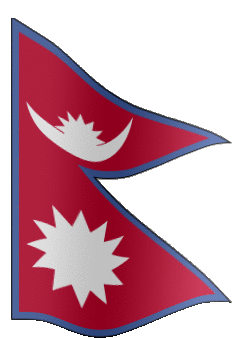Published Date : 2020-06-19 (Modified Date : 2021-06-21)
1. Gorkha District
Gorkha is located in eastern part of Gandaki Province which is popular for historical and religious places, rich in cultural diversity and center of attraction for tourism. The district headquarter is Gorkha Bazaar. Gorkha district has 11 local levels, 2 municipalities, 9 rural municipalities and 2 constituencies. This district is very rich in biodiversity and geographically extending from the mid hills to the northern Himalayas. Area of this district is 3 thousand 310 square kilometers. It is located at an altitude of 228 meters to 8163 meters above sea level. The district has tropical, sub-tropical, warm temperate and cool temperate climate. This district is bounded by Dhading and Tibet (China) to the east Tanahu, Lamjung, Manang district and Tibet (China) to west, northern border by Tibet (China) and southern border by Chitwan, Tanahu and Dhading district. According to the National Census 2068, out of the total population of 271,061 in Gorkha district, 1,21,041 are males and 1,50,020 are females.
A. Barpak Sulikot Rural Municipality
Barpak Sulikot Rural Municipality is under the historical and ancient significance of Gorkha district of Gandaki province. It included previous barpak, swara, swaurpani, takumajh lakuribot, panchkhwa deurali, and pandrung VDCs of Gorkha district. Barpak is the epicenter of the Great Earthquake 2072, which is the focus of the world's attention in this village. Sulikot Danda, Sita Cave, Takukot Maibhagbati etc are adorned with places which have cultural and historical significance in this rural municipality. As per National Census 2068, the population of this municipality is 25389. The major crops grown in this municipality are cereal crops (paddy, maize and millet) while goats are reared for meat, cattle and buffaloes are reared for milk production.
B. Gandaki Rural municipality
Gandaki rural municipality has been formed by integrating the Fujel, Darbung, Bhumlichowk, Ghyalchowk, Tanglichowk and Makasing former VDCs of Gorkha district. This rural municipality is bounded by Dhading district in the east/north and Shahid Lakhan rural municipality in the west/north, Chitwan district in the suoth. This rural municipality is full of natural diversity. The total area of this municipality is 123.86 square kilometers and according to the National Census 2068, the population of this municipality is 23262. The major crops grown in this municipality are cereal crops (paddy, maize and millet) and off seasonal vegetable farming is the main source of income for the farmers along the highways.
2. Dhading District
Dhading is a mid-hill district in the Bagmati province of Nepal. Dhading, is the only district in Nepal that stretches from the northern Himalayas to the Mahabharat mountain range in the south and is located in the lap of the Ganesh Himal. While examining the characteristics of this district, it is found that the context of places like Maidikot, Salyankot and Kanakot is connected with the nation builder Prithvinarayan Shah. Similarly, the gardens, pavilions and temples built by the famous nationalist Prime Minister Bhimsen Thapa are still in ruins in Bungkot Ghat. Trishuli and Budhigandaki are the major rivers flowing through this area. The total area of this district is 1926 square kilometers. It spreads at an altitude of 300 meters to 7110 meters above sea level. It is bordered by Kathmandu, Nuwakot and Rasuwa districts to East, Gorkha district to West, Tibet (China) to north and Makwanpur and Chitwan districts to South. According to the National Census 2068, the population of this district is 334292.
A. Benighat Rorang Rural municipality
Benighat Rorang rural municipality has been formed by integrating the Jogimara, Dhusha, Benighat and Mahadevsthan former VDCs of Dhading district. This municipality extends from Prithvi Highway in the north to Mahabharat range in the south. Gajuri rural municipality and Makwanpur district bounded this municipality from east while Chitwan district in the west, Siddhalek rural municipality, Gorkha and Chitwan districts in the north and Chitwan and Makwanpur districts in the south. This rural municipality has been divided into 10 wards. The total area of this municipality is 206.52 sq. km. According to the National Census 2068, the total population of this rural municipality is 31475. This municipality is like a flower garden of different castes, languages and religions. The major crops grown in this municipality are cereal crops (paddy, maize and millet) and off seasonal vegetable farming is the main source of income for the farmers along the highways.
B. Gajuri Rural Municipality
This rural municipality has been formed by integrating the previous Gajuri, Pinda and Kiranchok former VDCs of southwest of Dhading district. The Gajuri rural municipality is spread from the banks of Trishuli River to the border of Makwanpur district. This municipality is known to almost everyone because prithivi highway which connect terai and many more parts of Nepal to Kathmandu passes through this rural municipality. The area of this municipality is about 138.66 sq. Km. It is bounded by Galchi Municipality on the east, Benighat Rorang Municipality on the west, Trishuli River on the north and Makwanpur District on the south. According to the National Census 2068, there are 27084 people living in this municipality. The major crops grown in this municipality are cereal crops (paddy, maize and millet) and off seasonal vegetable farming is the main source of income for the farmers along the highways.

